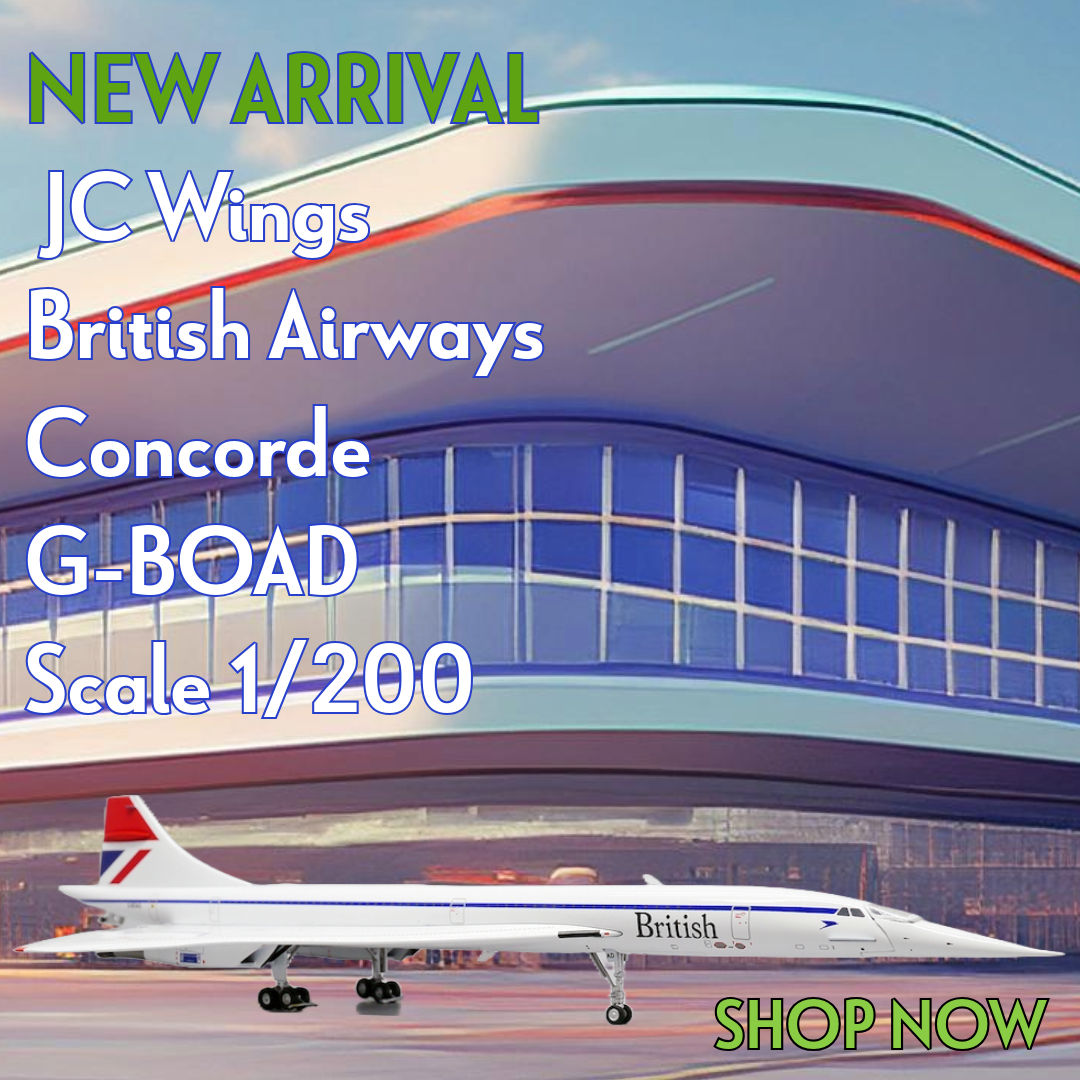Concorde and Tu-144: The Supersonic Race
Posted by Airspotters on 25th Sep 2024
Concorde and Tu-144: The Supersonic Race
The Concorde and the Tu-144 were the world's first commercial supersonic transport aircraft, developed in the 1960s and 1970s. Both were designed to significantly reduce travel times between continents, offering a luxurious and high- speed flying experience.
Concorde
- Anglo-French collaboration: Developed jointly by Britain and France.
- First flight: March 2, 1969.
- Commercial service: 1976-2003.
- Speed: Mach 2.04 (approximately 1,350 mph).
- Range: 4,500 nautical miles.
- Notable features: Sleek, delta-wing design; four Olympus 593 engines; distinctive sonic boom.
Tu-144
- Soviet development: Designed by the Tupolev Design Bureau in the Soviet Union.
- First flight: December 31, 1968 (two months before Concorde).
- Commercial service: 1977-1983.
- Speed: Mach 2.2 (approximately 1,400 mph).
- Range: 4,350 nautical miles.
- Notable features: Similar delta-wing design to Concorde; four Kuznetsov NK-144 engines; faced several technical challenges and safety issues.
Key Differences:
- Design: While both aircraft shared a similar delta-wing design, the Tu-144 was slightly larger and had a more angular nose.
- Performance: The Tu-144 had a slightly higher top speed but faced challenges with reliability and fuel efficiency.
- Commercial success: The Concorde enjoyed more commercial success and operated for longer, while the Tu-144 faced various setbacks and was eventually retired.
The Legacy:
Both the Concorde and the Tu-144 were groundbreaking achievements in aviation, pushing the boundaries of technology and speed. However, the high operating costs, environmental concerns, and safety issues associated with supersonic flight ultimately led to their retirement. Today, they remain iconic symbols of a bygone era of supersonic travel.

 British Pounds
British Pounds
 US Dollars
US Dollars
 EURO
EURO
 Australian Dollar
Australian Dollar
 Singapore Dollar
Singapore Dollar
 Switzerland Franc
Switzerland Franc
 Denmark Krona
Denmark Krona
 Hong Kong Dollar
Hong Kong Dollar
 Japan Yen
Japan Yen
 Sweden Krona
Sweden Krona
 Polish Zloty
Polish Zloty



